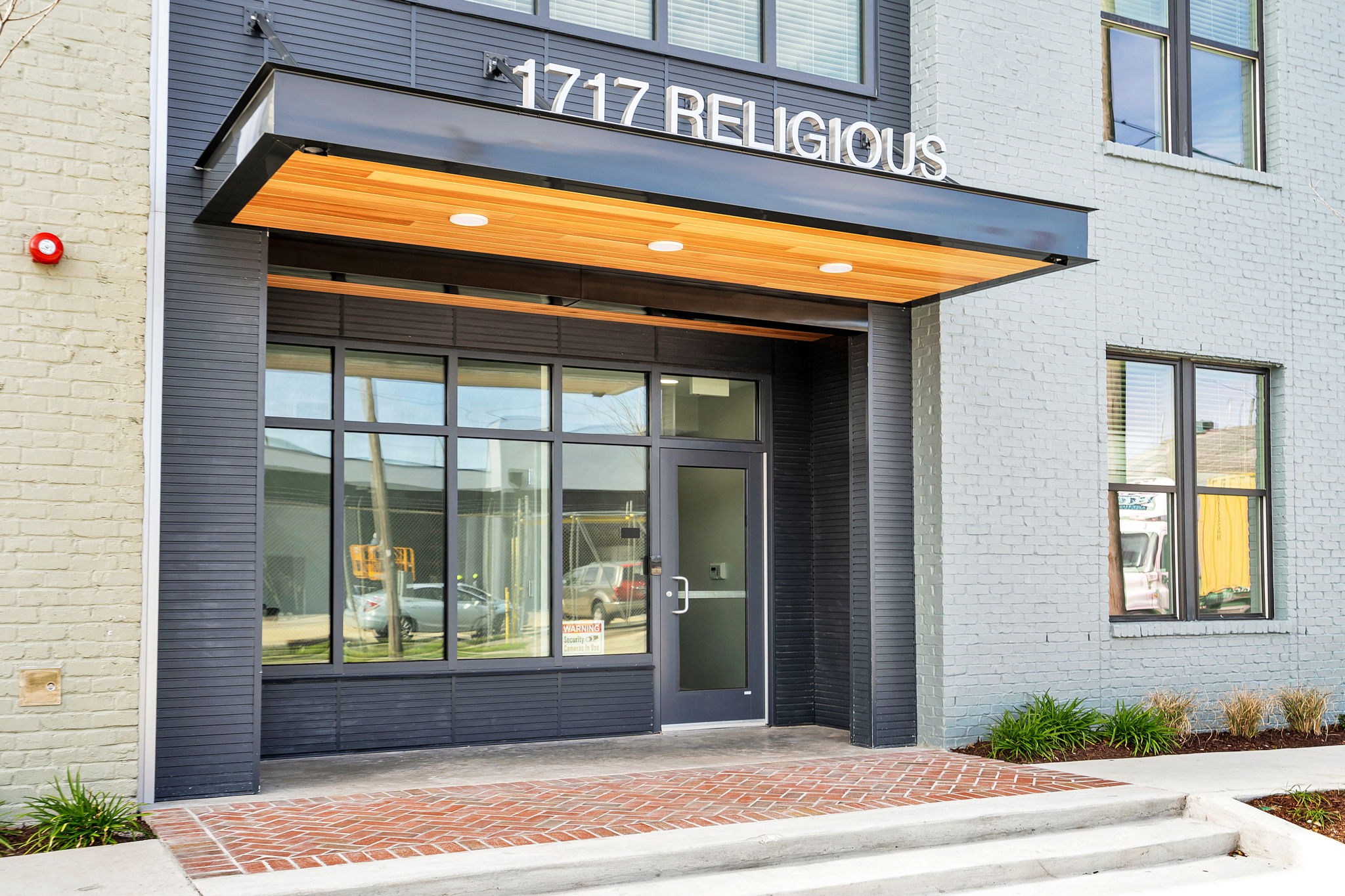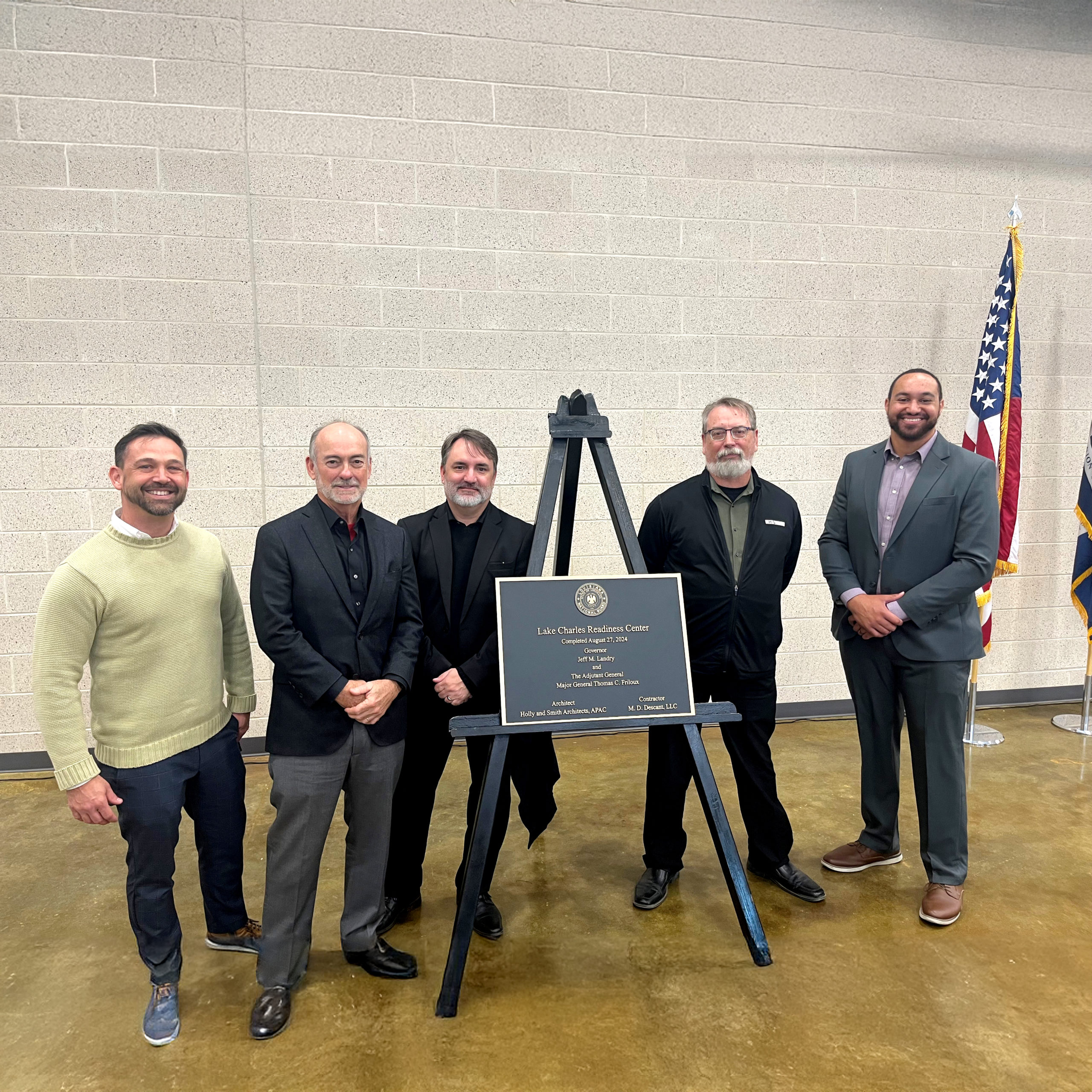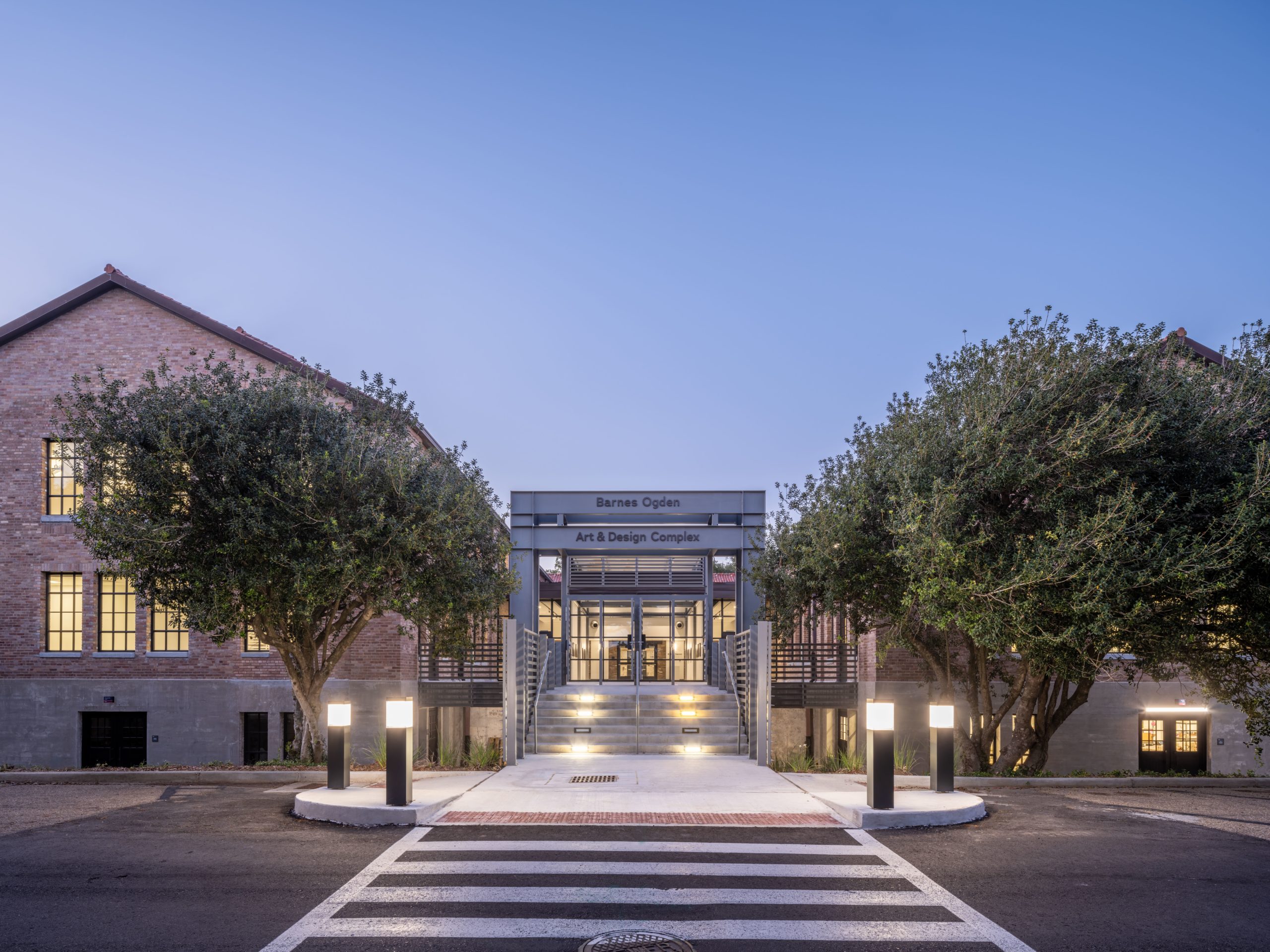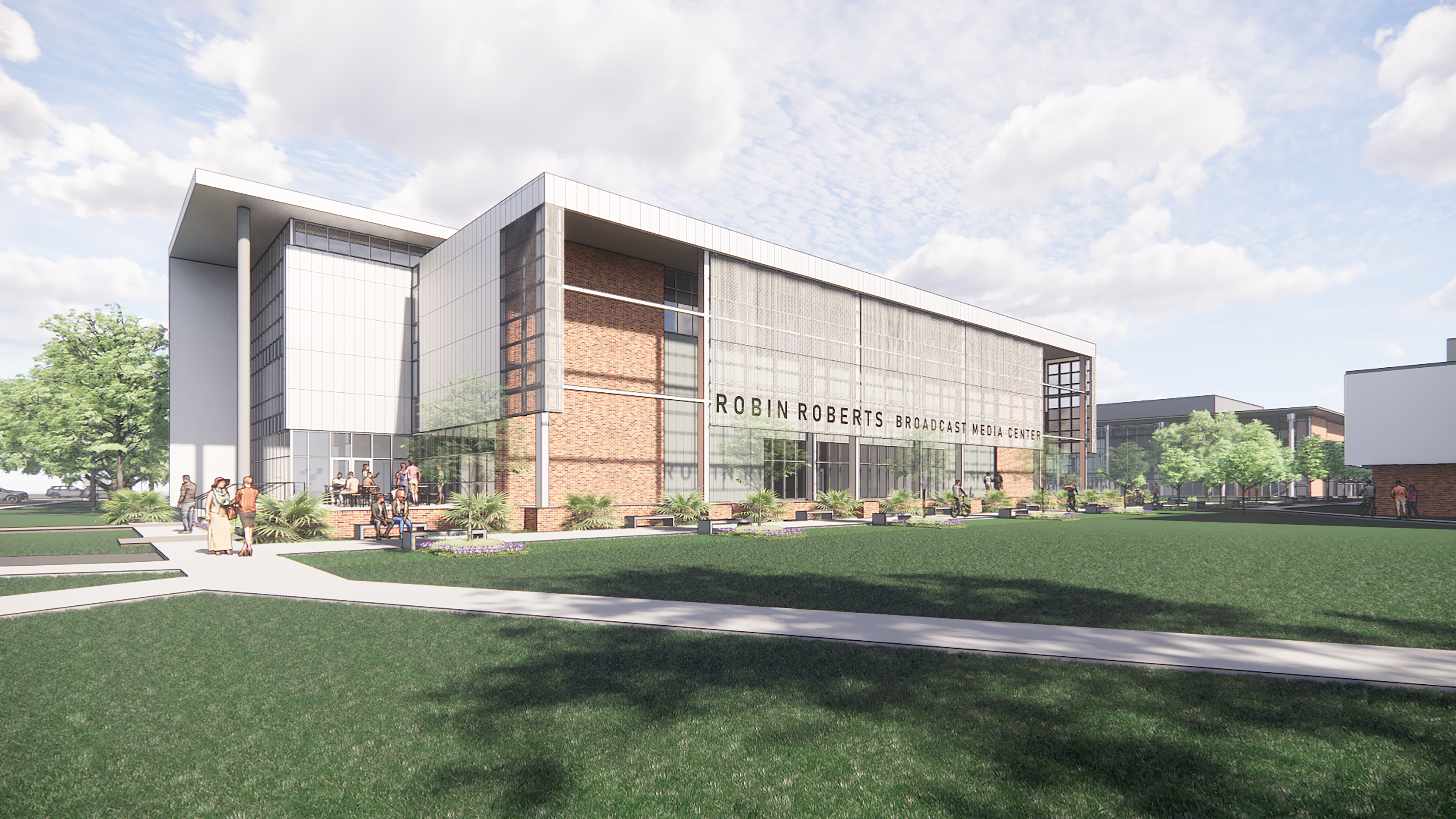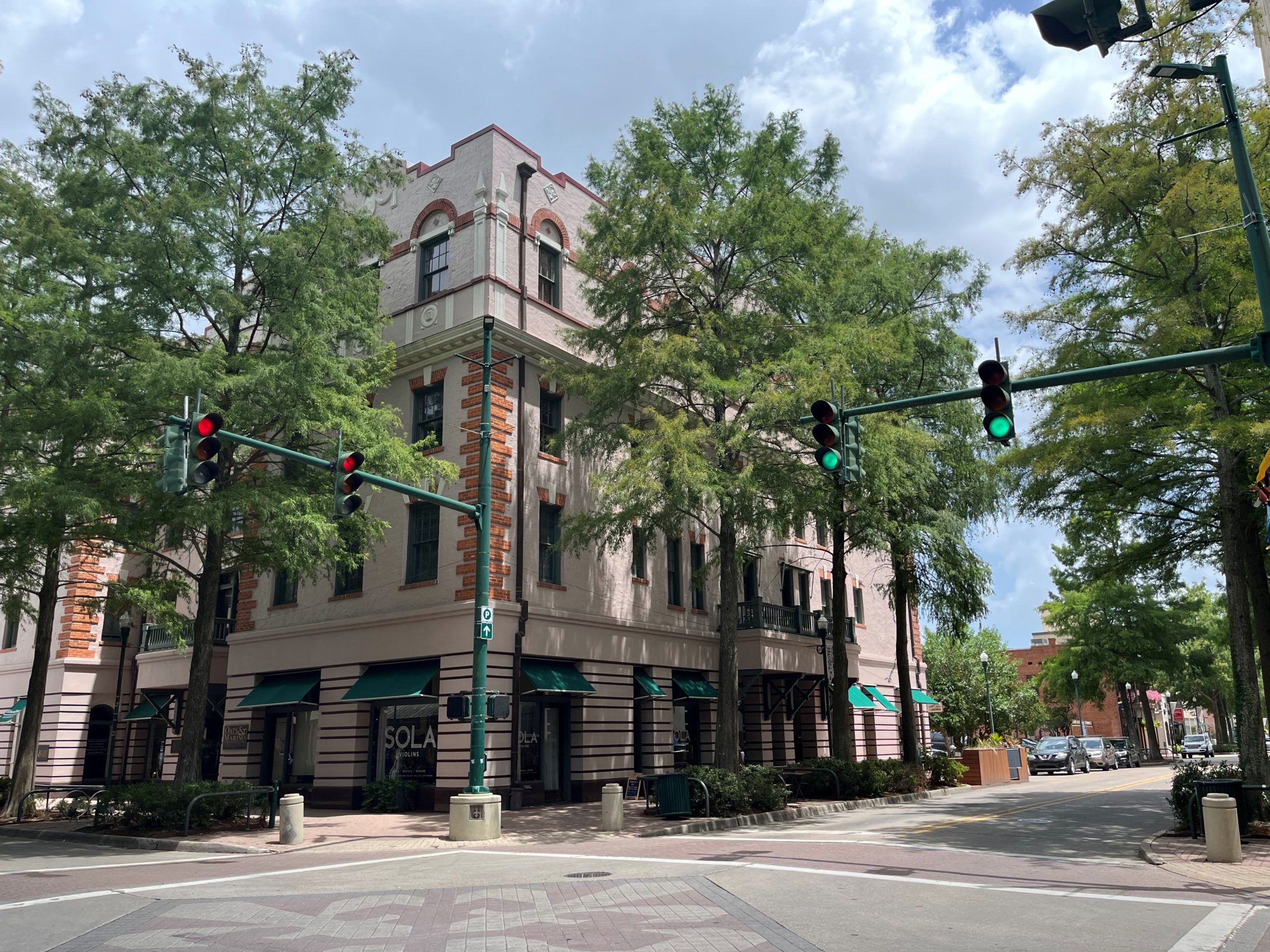Inside Out
The Importance of Interior Design in Architecture
“We shape the buildings and then the buildings shape us .” Winston Churchill
Interior Design and Architecture go hand in hand. Fully integrating the two is of the utmost importance for successfully designing spaces. When the interior and exterior are cohesive, it enhances the experience of the people who work, learn, gather, worship, or live in the space.
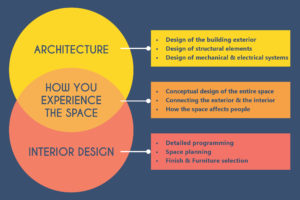
Renowned architect Ludwig Mies van der Rohe famously said, “God is in the details”. By paying close attention to even the slightest of details, a space can go from normal to extraordinary. Interior Designers are trained to focus on those details and to design them in order to work seamlessly with the rest of the building. Some examples by H/S are:

The Hammond branch of Fidelity Homestead Bank was designed to take on the form of a residence, inspired by the client’s mission of assisting people in financing a home. Both the exterior and interior utilize natural materials in a palette of warm and cool tones.

The renovation and addition to Monroe Hall at Loyola University transformed the building completely. The updated facility houses Math, Sciences, Performance and Visual Arts departments, and utilized concepts of the light spectrum, which is found in science and art, to inform the new design.
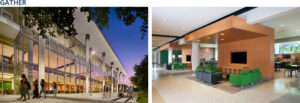
The Southeastern Louisiana University Student Union renovation and addition provided the university’s students, faculty, and staff a flagship commons facility that was both inviting and energetic. The glass curtainwall serves as a connector between the exterior and the interior, while the living room vignettes provide a home-like feel for students using the space.
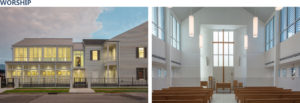
The new chapel at St. Michael Special School in New Orleans was designed as an addition to the existing historic convent building. A clean and simple palette of white was used to unify the exterior and the interior of both the chapel and the convent building, and to serve as a cohesive element between the old and the new.
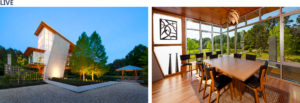
The Pond House at Ten Oaks is one with its natural surroundings. Clean lines and shapes were used alongside natural materials like wood to create a regionally modern, sustainable home. The use of glass in the main living and dining areas blurs the line between outside and inside.
The functionality of the space’s interior finish materials is critical. Interior Designers are trained to understand the myriad of finish options available, and to select the appropriate materials for a particular space. Those materials must be durable, functional, maintainable, aesthetically pleasing, and integrated with the architecture. Understanding which materials are appropriate for certain types of spaces is essential.
The integration of Interior Design in the overall design is a continuation, refinement, and response to the concept. The overall design of a building sets the tone for everyone who uses the space. A thoughtful, well-planned design integrates the exterior and interior, allowing the two to flow seamlessly. This creates a cohesive feel and a complete experience for the user.
Having fully integrated Interior Design and Architectural services can be key to a successful project, allowing the design of the space to function and flow from the inside out.
At Holly & Smith Architects, our approach integrates interiors into our work product. Our Interior Design Department works continuously & diligently to extend the concept to the overall, as well as to the smallest detail.





